Key takeaways:
- Each breakdancing style offers unique expressions, and dancers evolve their personal interpretations through learning and practice.
- Learning new styles enhances creativity, adaptability, and strengthens community connections among dancers.
- Engaging with local practices, workshops, and online resources fosters individual growth and collective support within the breakdancing culture.
- Approaching new styles methodically by setting goals, researching fundamentals, and seeking feedback can significantly improve skills and understanding.
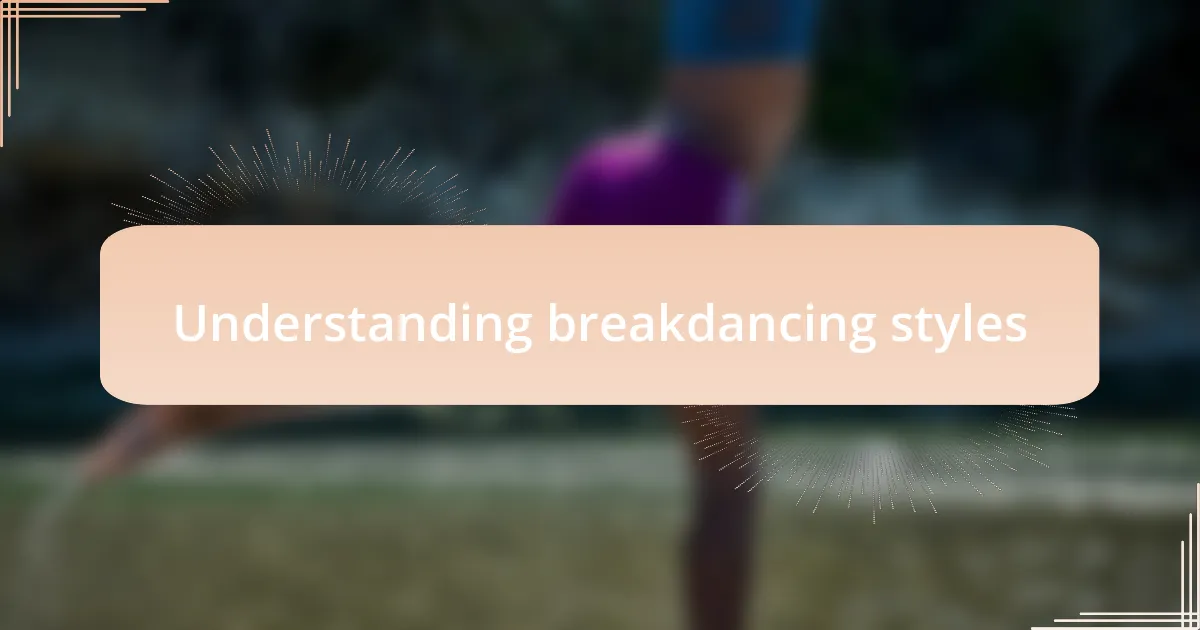
Understanding breakdancing styles
When I first dove into breakdancing, the variety of styles caught me off guard. Each style—like top rock, down rock, and freezes—seems to carry its own energy and flair. I remember watching a fellow B-boy nail a headspin, and I couldn’t help but wonder how they found their unique interpretation within the dance.
What often fascinates me is how each dancer infuses their personality into these styles. While learning to incorporate power moves, I struggled with the footwork in down rock, feeling like I wasn’t capturing the essence of what makes that style so dynamic. It’s like trying to speak a new language; the nuances matter, and they illuminate the dancer’s true voice on the floor.
As I progressed, I began to appreciate how styles evolve and intertwine. I sometimes see a B-girl blending elements of popping within her breakdancing, making me think—how do we define these categories? Perhaps it’s our individual expressions that push the boundaries of breakdancing, inviting us to honor tradition while also innovating in our practice.

Importance of learning new styles
Learning new styles in breakdancing is crucial for personal growth and expression. I remember my first attempt at integrating elements of hip-hop choreography into my practice. At first, it felt awkward, but soon I discovered how these additional movements not only expanded my repertoire but also deepened my connection to the music and the dance community. Isn’t it fascinating how a simple shift in style can open up a whole new world of creativity?
As I explored more styles, I realized that each new technique shapes my understanding of the dance as a whole. For example, when I tried krumping, the raw emotional energy brought a different intensity to my battles. I often ask myself: how do these experiences make me a better dancer? The truth is, embracing diverse styles sharpens my problem-solving skills on the dance floor, making me more versatile and adaptable during competitions.
Moreover, learning new styles fosters a sense of community among dancers. When I attended workshops that combined breakdancing with contemporary jazz, I was amazed by the collaborative spirit in the room. Each dancer brought something unique, and in turn, we all learned from each other. It reinforced my belief that by embracing different styles, we don’t just grow as individuals; we uplift the community as a whole. Wouldn’t you agree that our collective growth strengthens the dance culture we cherish?
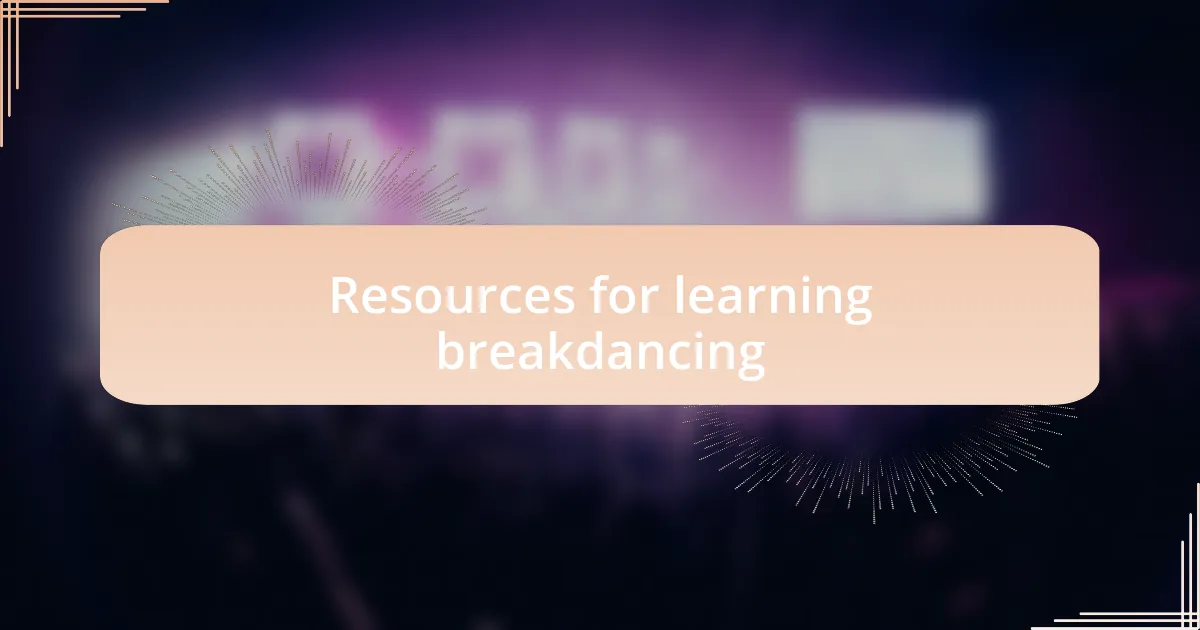
Resources for learning breakdancing
Finding the right resources for learning breakdancing can significantly enhance your growth as a dancer. I remember stumbling upon an online tutorial series that broke down foundational moves in a truly engaging way. Those step-by-step guides were invaluable, and I often reflect on how they fueled my confidence to tackle more complex transitions. Have you ever tried following along with a video only to find yourself stumbling through the basics? That’s where patience comes in.
In addition to online resources, I highly recommend seeking out local workshops or classes. Attending a weekend jam session in my community opened my eyes to the wealth of knowledge I had been missing. I was fortunate enough to learn directly from seasoned dancers, who shared not only their techniques but also personal stories of their journeys. There’s something deeply impactful about being in the same space as passionate dancers—don’t you think that energy can spark inspiration?
Finally, social media platforms like Instagram and TikTok have become treasure troves for learning breakdancing. I often find myself scrolling through inspiring clips, learning new moves, and adapting them into my practice. The best part? Engaging with fellow dancers in the comments often leads to tips I wouldn’t have considered otherwise. Isn’t it incredible how these platforms connect us and make learning more accessible?
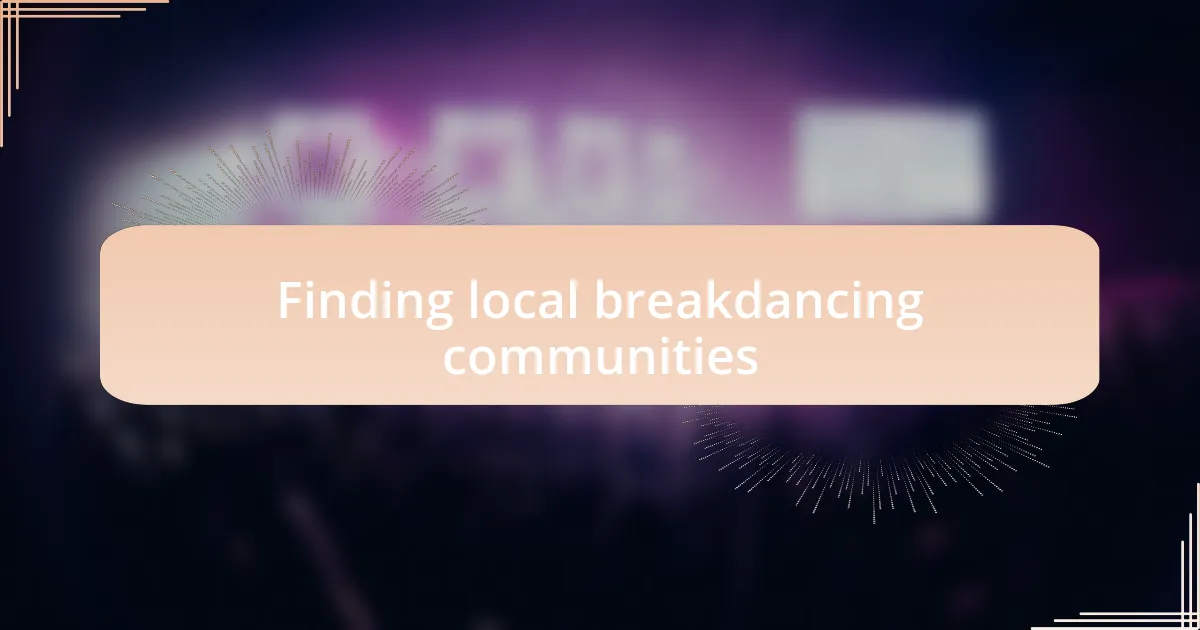
Finding local breakdancing communities
Finding local breakdancing communities can truly transform your dancing journey. I remember the thrill of discovering a nearby studio that hosted weekly practice sessions. The moment I walked in, I was greeted by a diverse group of dancers, all eager to share their skills. Have you ever felt that rush of excitement while connecting with like-minded individuals? It’s electrifying.
Another fantastic way to find breakdancing communities is through local events or competitions. I once attended a local battle, and not only did I witness incredible talent, but I also struck up conversations with dancers who invited me to their practice sessions. Those spontaneous connections can open doors you never knew existed. Don’t underestimate the power of stepping out of your comfort zone!
Lastly, online platforms like Facebook and Meetup can be goldmines for finding local breakdancing groups. I’ve encountered several dedicated pages that post about upcoming jam sessions and workshops. When I joined a group, I was amazed by the sense of camaraderie and support. How rewarding is it to share your passion with others who understand the hustle? Each interaction deepens your connection to the culture and fuels your personal growth as a dancer.
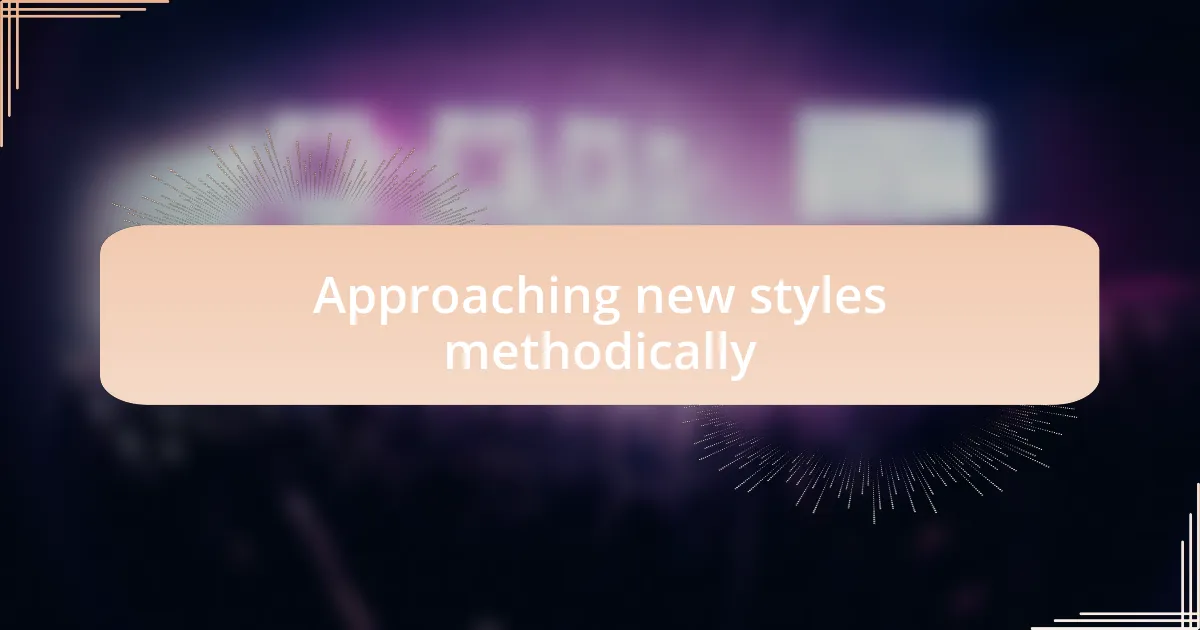
Approaching new styles methodically
When I dive into a new breakdancing style, I like to map out my approach first. I recall the first time I tackled popping; it felt overwhelming initially. I set specific goals, such as mastering one move each week, which turned the process from intimidating to manageable. Have you ever noticed how breaking down a complex challenge can make it feel less daunting?
I find it incredibly helpful to research the history and fundamentals of the style I’m learning. For instance, before I started exploring freezes, I spent time watching videos and reading about the pioneers of the move. Understanding the roots of a technique not only fuels my motivation but also adds depth to my practice. How often do we forget to appreciate the stories behind the moves we love?
Incorporating feedback is another methodical strategy I swear by. After experimenting with new styles, I’ve made it a point to ask fellow dancers for their insights. I recall a time when a mentor pointed out small adjustments to my footwork that made a world of difference. When was the last time you reached out for feedback? It can be a game-changer in fine-tuning your skills, bridging the gap between where you are and where you want to be.
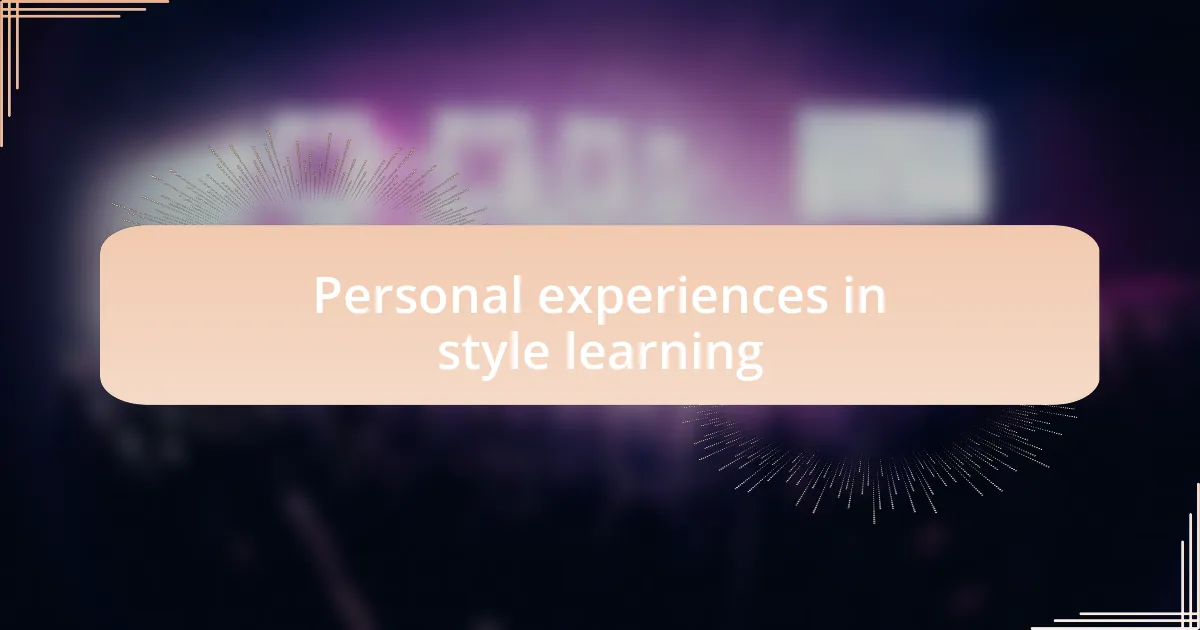
Personal experiences in style learning
When I first tried my hand at krumping, I vividly remember the powerful emotions that surged through me. The raw energy of the dance felt like a release, but I struggled with expressing that intensity in my movements. I remember standing in front of the mirror, asking myself, “How can I channel this passion into my style?” It was through relentless practice and self-reflection that I found my voice in the dance.
A memorable moment was when I attended a workshop focused on b-boying techniques. I was nervous but excited to learn from seasoned dancers. During a freestyle session, I hesitated to join in, wondering if I’d be good enough. But when I finally stepped out, the exhilaration of moving alongside others ignited my confidence. Isn’t it amazing how being surrounded by a supportive community can encourage us to push our boundaries?
Sometimes, my learning journey takes unexpected turns. I once attempted tutting, which seemed simple, yet I discovered my body struggled with the precision it required. After a frustrating session, I felt like giving up. But the moment I shifted my mindset and thought of it as an opportunity for growth, everything changed. What if every struggle is just a stepping stone to mastering a new style? This realization energized my practice and made the journey all the more rewarding.